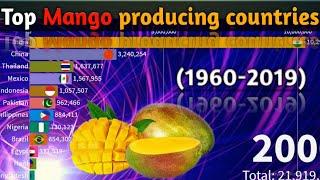Top 10 Coffee Producing Countries in Africa
Description
Top 10 Coffee Producing Countries in Africa
Hello Displorers, welcome back to another informative video and thanks for watching. In today’s video, we shall be counting down the top 10 coffee producing countries in the Africa. Coffee is the actually the world’s second most traded commodity after oil. Countries that produce coffee are all located in the Tropics between the tropics of cancer and Capricorn. There are four primary types of coffee which are Robusta, Arabica, Liberica and Excelsa coffee which are cultivated in most coffee producing countries together but some countries are known for producing a particular brand mostly. Also some coffee beans are considered of higher quality than others and the characteristics awarded to high quality beans include its country of origin, altitude cultivated in, the type, processing method, size and shape, smell as well as the colour of the beans. The African continent accounts for about 12% of the world’s production of coffee but its beans are much prized by coffee connoisseurs.
If you’re new here, welcome. Be sure to subscribe and turn on notifications so that you don’t miss any of our daily uploads.
Most African countries do produce coffee of different types and qualities, amongst them, here are the top 10 coffee producing countries in Africa.
10. Rwanda, 15,000 Tonnes per Year
Lying almost in the centre of the continent, Rwanda is a fertile, mountainous and compact nation. Coffee was introduced to the country by German colonists in 1904. However, commercial production only really ramped up in the 1930s, under Belgian rule. The country, for many years, had a reputation as producer of very low-quality coffee, and during the 1980’s economic crisis and the subsequent political turmoil following the 1994 genocide, coffee production was almost entirely leveled. The majority of its coffee is grown by some 400,000 small-scale farmers and their families. Almost all of Rwanda’s coffee is Arabica and 95% is of it is of the Bourbon variety. The first private washing station was built in 2001, with the help of USAID-financed projects, PEARL now SPREAD and ADAR. These transformational programmes were aimed at switching the focus in the Rwandan coffee sector from an historic emphasis on quantity to one of quality and so opening up Rwanda to the far higher earning specialty coffee market. Meanwhile, following a dry run in 2007 with the ‘Crop of Gold’, Rwanda held its first Cup of Excellence competition in 2008 and since then has introduced many more buyers to the exceptional Bourbon coffees that this country produces.
9. Democratic Republic of Congo - 20,100 Tonnes per Year
Coffee production in Democratic Republic of the Congo is centered in the Lake Kivu provinces. There were more than 11,000 coffee farmers in the DRC in 2013. Co-operative associations, such as Furaha,s Muungano, and Sopacdi are valuable partners to the coffee farmers in sales and distribution. Many varieties of coffee are grown in the DRC but the two major species are Robusta and Arabica which accounts for one fifth of the total production of coffee. By 1989, coffee exports were at a high of 119,320 tons, but they declined sharply in the 1994–2003 period, possibly due to the civil wars of 1997 and 1998. In 2012, the government launched a program for the recovery of the coffee sector titled Strategy Document for the Recovery of the Coffee Sector 2011 to 2015 and made a budgetary provision US $100 million for the purpose. It was estimated that the recovery plan would result in an increase in production to 120,000 tons by 2015.
8. Gabon - 30,000 Tonnes per Year
The tropical humid climate and the fertile volcanic soils are ideal for coffee cultivation and even allow 2 coffee crops per year and that is the advantage Gabon has in the production of coffee. The coffee is grown for export and today, together with cocoa, is one of the most important resources of Gabon. The increasing world demand and higher coffee prices have resulted in Gabon investing in the agricultural sector. With the CAISTAB, a state stabilization funds founded in 2016 which invested $334.000 into the coffee sector, the annual coffee crops increased greatly guaranteeing the incomes of at least 3,000 farmers. The aim is to increase the gross domestic product from 5% to 20% by 2020. Initiatives such as wet processing also brought the Robusta quality to specialty coffee level. 2015/2016, Gabon exported 500.000 bags 60kg of coffee as much as Thailand and Venezuela and its production currently stands at 30,000 tons a year.
7. Madagascar- 31,200 Tonnes Per Year
The coffee grown in Madagascar is primarily the lower grade Robusta coffee beans although there is an increasing amount of higher grade Arabica coffee now being cultivated in the country. Currently about 90% of Madagascar coffee production is Arabica. The Republic of Madagascar is locatedp











![[NEW] Top 10 Countries That Produces Most Cars - Top 10 Car Producing Countries 1950 - 2020](https://no-mar.com/uploads/thumbs/4d2981095-1.jpg)









Comments